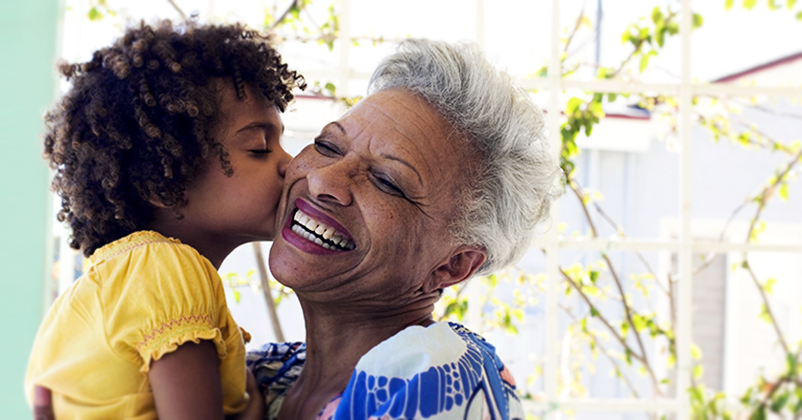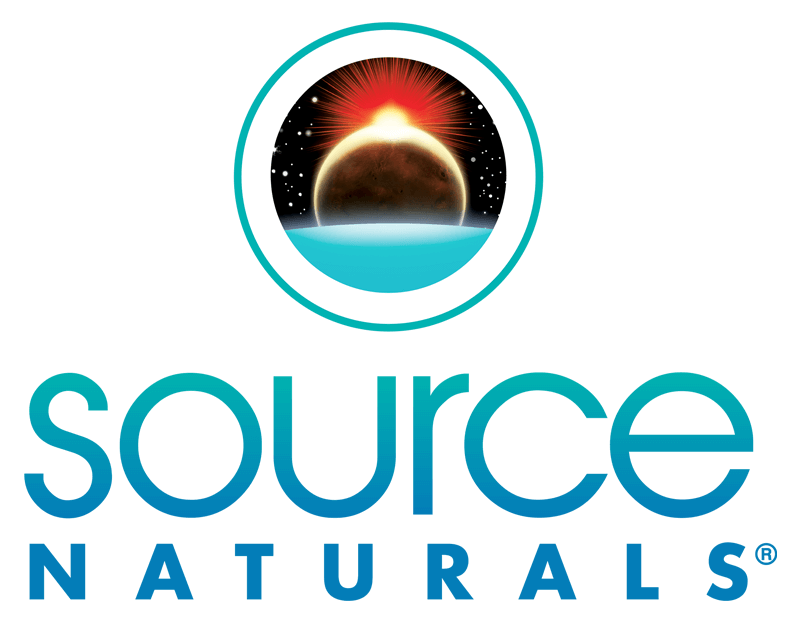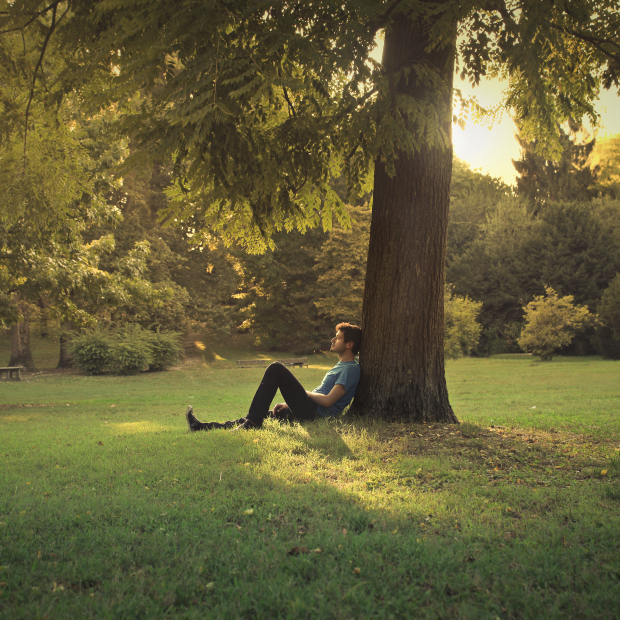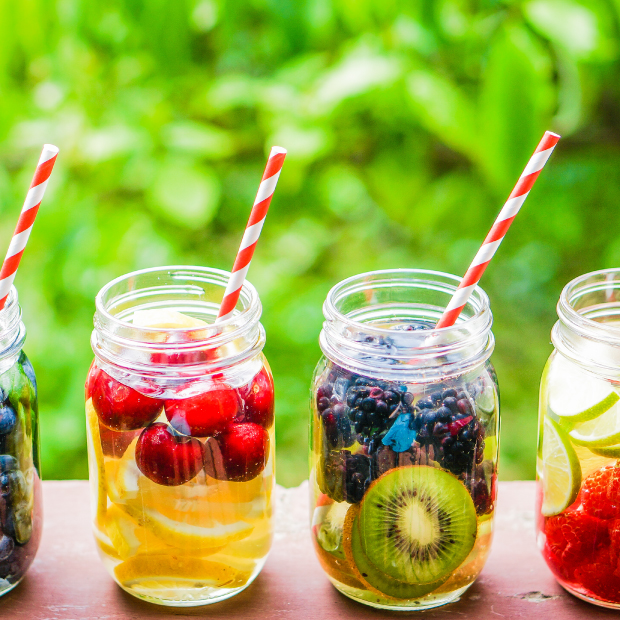
We’ve all felt the warmth and strength that flow from having a close relationship with someone. Love and belonging are so important, in fact, that eminent psychologist Abraham Maslow placed them on his Hierarchy of Needs for the journey toward self-actualization. From infancy through old age, we have a biological need to connect with others, not just to live but to live well.
Science is now quantifying how the bonds of love and generosity between parent and child, friends and lovers, or members of a community trigger physiological mechanisms that have powerful positive influences on our health and well-being. Researchers think that these health benefits come from the way relationships buffer the effects of stress, reducing levels of the stress hormone cortisol and triggering a rewarding flow of neurotransmitters (chiefly oxytocin, also called “the cuddle hormone”) in our brains. Reducing stress supports better function in all body systems and better health throughout our lives.
The more we understand about how our relationships support our own well-being, the more we’ll make the conscious choices—both large and small—that help create healthier lives for ourselves and those around us.
Our First, Most Powerful Connection Is Touch
From infancy, one of the most important connections we experience is touch. It’s so powerful that infants can actually die from lack of nurturing physical contact. Distressed babies calm down when they’re picked up, rocked, and carried around; this automatic relaxation is a universal neurological response among all mammal infants, from humans to mice, that may serve to strengthen the essential adult-child bond.
Touch wields its strong biological and emotional influence throughout our lives. When a friend or loved one touches us, pressure receptors just under the skin called Pacinian corpuscles send a signal directly to the vagus nerve, which is part of the parasympathetic nervous system and responsible for a wide range of activities in the body. In this case, it responds by slowing heart rate and decreasing blood pressure—essentially relaxing the body’s automatic vigilance systems.
In the brain, levels of cortisol (stress) fall as oxytocin (reward) increases dramatically, generating feelings of trust and bonding—the effect that researcher Matt Hertenstein calls “the biological foundation and structure for connecting to other people.” At the same time, an area called the orbitofrontal cortex (which also responds to sweet tastes and pleasing smells) lights up, completing the organic connection between touch and reward. “Touch is a very powerful rewarding stimulus,” says Hertenstein, similar to eating chocolate.
Touch Literally Makes Us Feel Better
While the exact cause may not be clear by scientific standards, it’s apparent from study after study that having a sense of connection to others—embodied by simple touch—supports our physical and psychological resilience.
- Touch fights anxiety. Studies have found that touch (even from an inanimate object) can help people with low self-esteem in confronting their own mortality, reducing their death anxiety and acting as a buffer against social alienation. Together with more traditional therapies, touch could be useful in treating individuals suffering from low self-esteem, depression, and anxiety.
- Touch can even reduce the stress of pain. Researchers at the University of Virginia put women in a functional MRI and told them they’d be getting a painful electric shock. Women who were able to hold someone’s hand as they waited showed less activation of threat-related areas in their brain—and if they were happily married women holding their husband’s hand, they had so much less fear of the shock, it was as if they weren’t anticipating a threat at all.
Loving Connections Make Strong Hearts
Whenever we cultivate meaningful personal connections, the resulting stress reduction is good for every system in the body—especially the heart.
- Our relationships are as important as diet and exercise. A new study from the University of North Carolina-Chapel Hill is the first to definitively link social relationships with specific measures of physical well-being. Researchers found that the quality and quantity of a person’s social ties affect blood pressure, body mass index (BMI), waist circumference, and a protein that measures systemic inflammation—all of which are physiological indicators of chronic daily stress. Over time, elevations in these indicators can lead to long-term health issues like heart disease, stroke, and cancer.
- Say it with a hug. The hugs that convey the warm support of a partner have been shown to reduce heart rate, blood pressure, and cortisol levels, plus boost the release of oxytocin in the brain—all of which help people feel more connected and trusting. While the effects in one study seemed to be greater for women, other studies have found that affectionate relationships with a supportive partner can contribute to lower reactivity to stressful life events for both sexes.
- Create a happy marriage, get a healthier cardiovascular system. A national study of more than 3.5 million Americans found that married people are less likely than single, divorced, or widowed people to suffer any type of heart or blood vessel problem. This was true at any age, for women as well as for men, and regardless of other heart disease risk factors they had such as high cholesterol or diabetes. But while a spouse may encourage you to take better care of yourself, researchers cautioned, "we can't prove by any means cause and effect."
A closer look at the marriage study suggests that it’s actually the quality of the relationship, married or not, that really matters. While being happily married can help us live longer and lower our risk of cancer, high blood pressure, heart disease, or even the flu, researchers say that the effect of chronic marital stress is "similar in magnitude to more 'traditional' risk factors," such as physical inactivity and smoking. It’s not a stretch, then, to say that keeping our marriage healthy keeps our bodies healthy, too.
Giving Keeps Us Going
It’s apparent from study after study that having a sense of social connection and community supports physical and psychological resilience. Especially as we get older, generosity to others is a strong predictor of health, satisfaction, and longevity. When we actively offer our wisdom, experience, and resources, we help ourselves as much as we support others.
- Giving feels good mentally and physically. Researchers have consistently found that volunteering or giving to others activates the brain’s reward centers, triggering feelings of physical energy, reducing depression, and in a smaller percentage of people, alleviating physical pain. National Institutes of Health neuroscientist Jordan Grafman points out that “the brain structures that are activated when you get a reward are the same ones that are activated when you give. In fact, they’re activated more when you give.” The findings are so consistent that researchers have dubbed the effect “The Activism Cure.” Anyone can do it; every community and cause can use some help.
- Altruism defeats stress. Studies and data reviews—including a 50-study series from the Case Western Reserve University School of Medicine—have consistently found that giving behavior releases reward hormones in the brain (“the Helper’s High”) and actually dominates the body’s stress response. Altruistic emotions and behaviors (like kindness and generosity) are strongly associated with lower blood pressure, reduced stress, increased self-esteem, diminished depression, and greater longevity.
- Volunteering generates a healthy sense of purpose. Researchers believe that volunteering can generate a beneficial sense of purpose in life. Volunteering is linked to a 24% lower risk of mortality—possibly because volunteers end up caring for their health more proactively than non-volunteers. Says philanthropy researcher Sara Konrath, “One way to think about this is that when we care for ourselves, in a fundamental way, it allows us to care for others.” Interestingly, however, the effect only works for individuals who volunteer out of a sense of compassion for others, rather than selfish “what’s in it for me” motives.
- Helpers are more resilient. A 5-year study among married people over 65 found that those who helped others within the past year were less likely to die when dealing with their own stressful situations, such as illness, job loss, financial difficulties, or the death of a family member. Those who didn’t help had a 30% higher chance of dying after a stressful event. Researchers concluded that “helping others reduced mortality specifically by buffering the association between stress and mortality.”
- Social seniors are less disabled. Even after controlling for risk factors like disease history and smoking, researchers found that seniors who participated in socially active communities had 43% less disability and about half the rate of cognitive decline than seniors with low levels of social activity.
Loving and Giving Mean Healthier Living
Humans are social creatures; we need to feel connected to each other in order to flourish. Year after year, in study after study, the evidence (if not the exact mechanism) is conclusive: Loving and giving fulfill some of our most basic physical and emotional needs. It’s easy to forget how crucial our relationships can be for our own health, but the choice—and the benefit—is always ours, at every age. By cultivating loving relationships and actively giving to others, we can reduce the deadly effects of stress on our bodies and minds, opening ourselves and everyone around us to longer, healthier, and more meaningful lives.
References
Discover more health benefits of love, relationships, and giving from the resources we used for this article.
Association for Psychological Science, “Touch May Alleviate Existential Fears for People With Low Self-Esteem,” PsychologicalScience.org, Nov. 6, 2013. Accessed Feb. 10, 2017.
Bryan D. James, et al., “Relation of Late-Life Social Activity With Incident Disability Among Community-Dwelling Older Adults,” Journals of Gerontology, Series A, Biological Sciences and Medical Sciences on the US National Library of Medicine at NCBI.NLM.NIH.gov, Apr. 2011. Accessed Feb. 6, 2017.
Carolyn Gregoire, “Are Married People Actually Healthier? It’s Complicated,” HuffingtonPost.com, Feb. 14, 2017. Accessed Feb. 14, 2017.
Chris Woolston, “Marriage and Stress,” HealthDay.com, Jan. 20, 2017. Accessed Feb. 10, 2017.
Cleveland Clinic Heart and Vascular Team, “Being Married Can Lower your Risk of Heart Attack,” Health Essentials, ClevelandClinic.org, Mar. 5, 2015. Accessed Feb. 9, 2017.
James A. Coan, et al., “Lending a Hand: Social Regulation of the Neural Response to Threat,” Psychological Science on SagePub.com, Dec. 1, 2006. Accessed Feb. 10, 2017.
James Hamblin, “The Physiological Power of Altruism,” TheAtlantic.com, Dec. 30, 2015. Accessed Feb. 6, 2017.
Jeanie Lerche Davis, “The Science of Good Deeds,” Archives, WebMD.com, 2005. Accessed Feb. 6, 2017.
Karen M. Grewen, et al., “Effects of partner support on resting oxytocin, cortisol, norepinephrine, and blood pressure before and after warm partner contact,” Journal of Psychosomatic Medicine on PubMed.gov, Jul-Aug 2005. Accessed Feb. 8, 2017.
Karen M. Grewen, et al., “Warm partner contact is related to lower cardiovascular activity,” Journal of Behavioral Medicine on PubMed.gov, Fall 2003. Accessed Feb. 9, 2017.
Maia Szalavitz, “Touching Empathy,” PsychologyToday.com, Mar. 1, 2010. Accessed Feb. 2, 2017.
Meredith Maran, “The Activism Cure,” Greater Good Science Center at UC Berkeley, GreaterGood.Berkeley.edu, Jun. 1, 2009. Accessed Feb. 10, 2017.
Michael J. Poulin, et al., “Giving to Others and the Association Between Stress and Mortality,” American Journal of Public Health on the US National Library of Medicine at NCBI.NLM.NIH.gov, Sep. 2013. Accessed Feb. 3, 2017.
Paul Arnstein, et al., “From Chronic Pain to Peer Benefits and Risks of Volunteering,” Pain Management Nursing on ResearchGate.net, Oct. 2002. Accessed Feb. 14, 2017.
RIKEN Brain Science Institute, “Why do babies calm down when they are carried?” Riken.jp, Apr. 19, 2013. Accessed Feb. 6, 2017.
Stephen G. Post, “Altruism, happiness, and health: it’s good to be good,” International Journal of Behavioral Medicine on Link.Springer.com, June 2005. Accessed Feb. 9, 2017.
UNC-Chapel Hill, “Social networks as important as exercise and diet across the span of our lives,” Jan. 4, 2016. Accessed Feb. 8, 2017.
Wikipedia, “Maslow’s Hierarchy of Needs,” Wikipedia.com. Accessed Feb. 3, 2017.
Yang Claire Yang, et al., “Social relationships and physiological determinants of longevity across the human life span,” Proceedings of the National Academy of Sciences of the United States of America on PNAS.org, Jul. 20, 2015. Accessed Feb. 8, 2017.









